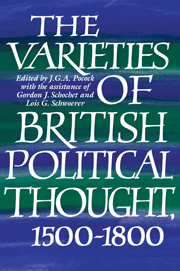Book contents
5 - Interregnum and Restoration
Published online by Cambridge University Press: 04 August 2010
Summary
That the execution of Charles Stuart was extraordinary and momentous hardly needs restating. Kings had been killed before, but only as a result of baronial rebellions or dynastic feuds. Such disputes were little more than power-struggles that were internal to the institution of monarchy. Charges of ‘misrule’ and ‘tyranny’, when they were heard at all, were a kind of ideological and rhetorical window-dressing that was generally intended to add weight to the more frequent and substantial claims of ‘usurpation’. Never before had a reigning sovereign been officially, and proclaimedly legally, executed for apparent reasons of state. None the less, the regicide of 1649 was carried out in a deeply monarchical political culture, and it can almost be said that it could have been carried out in no other. Whereas Louis XVI a century and a half afterwards was killed for being a king by revolutionaries some of whom were bent on destroying the institution itself, Charles I was killed for failing to be one: for failing to bring peace to his subjects, for persistently frustrating their endeavours to make peace with him, and most of all for launching the second civil war in 1648. Yet he could not with any plausibility be tried and executed unless it were charged that he had all along plotted to make war on his subjects, or without involving the abolition of monarchy itself in the act of ‘cutting off the King's head with the crown upon it’.
- Type
- Chapter
- Information
- The Varieties of British Political Thought, 1500–1800 , pp. 146 - 179Publisher: Cambridge University PressPrint publication year: 1994



